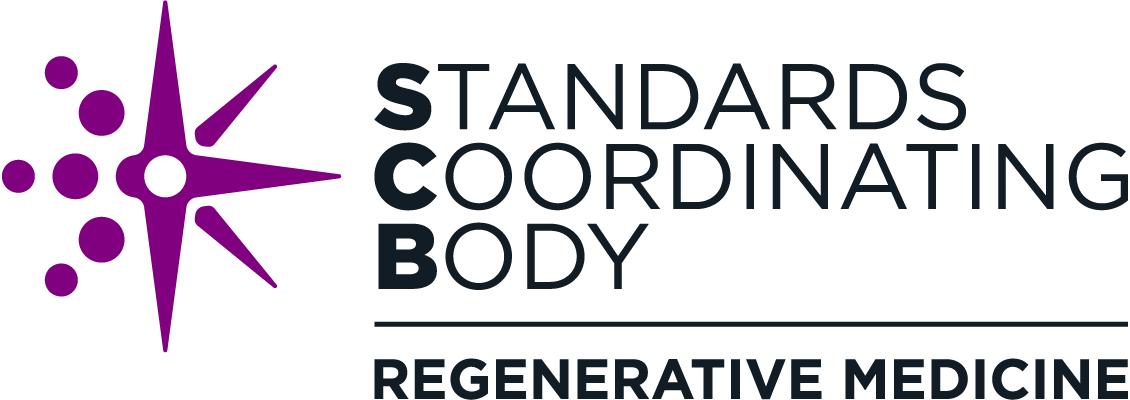Basics of Standards
New to standards? Get a better understanding of key standards terms, how standards fit into the regulatory framework, a high-level overview of how the standards development process works, and how to locate relevant standards.
What Is a Standard?
According to the U.S. National Technology Transfer and Advancement Act of 1995, standards are the common and repeated use of rules, conditions, guidelines or characteristics for products or related processes and production methods, and related management systems practices.
When adopted across an industry, standards can help make processes safer, more efficient, or better aligned among organizations.
Value of Standards
Standards support regenerative medicine solutions by helping to guide safety and quality, accelerate time to market, and spur US economic growth.
Guide Safety and Quality
Since the rise of industrialization in the early 1900s, standards have provided a foundation for efficiency, innovation, and safety across virtually all U.S. industries.
Accelerate Time to Market
Standards accelerate time to market, getting new therapies to patients faster that have the potential to improve quality of life as well as reduce the lifetime cost of illness through curative treatments.
Spur U.S. Economic Growth
U.S. leadership in standards development will ensure standards are aligned to the needs of U.S. industry and maintain U.S. competitiveness and economic growth.
Learn More
Types of Standards
-
A document that sets consistent protocols, methodology, technical specifications, or terminology for a product or process
EXAMPLE
Standard ID/Title: ISO 23033:2021: Biotechnology — Analytical methods — General requirements and considerations for the testing and characterization of cellular therapeutic products
Standard Development Organization: International Organization for Standardization (ISO)
Description: Provides considerations to help product developers select and design analytical methods that are fit for purpose and determine safety and efficacy of products
Benefits: Helps product developers more easily decide which assays to use and gives regulators greater confidence in the decision-making processes of regenerative medicine product developers
-
Substances or reagents with known properties that are used to calibrate equipment, function as controls, and/or aid in describing and evaluating qualitative and quantitative data of new materials or products or new batches/lots of existing materials
EXAMPLE
Name of Reference Material: ATCC RSM VR-1516, Human Adenovirus 5
Supplier: American Type Culture Collection (ATCC)
Description: A dose of purified Adenovirus, Type 5 (wild type adenovirus) with known properties (e.g., pH, composition), which can be used as a reference in characterizing adenoviral gene therapy products
Benefits: Enables sponsors to improve the consistency and safety of their products and helps regulators evaluate the safety of viral vector submissions
Differences Between Standards and Regulations
The primary difference between standards and regulations is that regulations are legally binding, while standards are typically voluntary unless mandated by regulation or statute.
| Regulations | Standards | |
|---|---|---|
| Created by | Federal regulatory agencies (e.g., FDA) | Typically produced by non-government entities or standards development organizations |
| Mandatory? | Yes: Can be enforced by regulatory authorities | No: Use of a standard is voluntary unless mandated by regulation or statute |
| Purpose | Set out specific requirements for regulated products that must be met by the supplier of the product | An organization can adopt standards to make a process safer, more efficient, or better aligned with the practices of other organizations in their industry |
| Availability | In the United States, regulations are written in the Code of Federal Regulations and published in the Federal Register | Some standards are available for purchase from the publishing organization, while others are freely available to the public |
Video: Role of Standards in the Regulatory Process
Judy Arcidiacono, FDA Regulatory Scientist, describes the benefits of standards use for regenerative medicine therapies and how they fit into the FDA regulatory process. She also provides an introduction to the FDA Center for Biologics Evaluation and Research (CBER) Voluntary Consensus Standards Recognition Program for Regenerative Medicine Therapies (SRP-RMT).
[ video transcript ]
More About the Government’s Stance on Standards
The U.S. government encourages the development and use of standards. Consensus standards promote international harmonization of standards that are acceptable to U.S. federal government agencies (e.g., FDA). Use of existing standards also minimizes the time and expense associated with the creation of government-unique standards.
FDA CBER launched the SRP-RMT in October 2023 to provide a mechanism for FDA to review Voluntary Consensus Standards (VCS) and designate those it recognizes as appropriate for facilitating the development of regenerative medicine products.
The use of FDA-recognized standards in CBER submissions can help increase regulatory predictability for regenerative medicine products.
Any stakeholder may submit VCS standards for consideration under the program. CBER reviews and updates its list of recognized standards approximately every 6 months.
More information on the SRP-RMT can be found in the related Guidance for Industry.
The U.S. government’s legal stance on standards is mandated in several places:
It is further clarified in two FDA guidances:
Guidelines for FDA staff participation in standards development activities are outlined in the
Organizations that Develop Standards
How Are Standards Created?
Who Creates Regenerative Medicine Standards?
Standards Development Organizations (SDOs)
Professional and scientific organizations
Certification/accreditation bodies
Pharmacopeia
Government agencies
LEARN MORE
Standards Development Process includes more information about the variety of organizations and processes.
FIND Relevant Standards in the Standards Portal
The SCB Regenerative Medicine Standards Portal offers an easily searchable and filterable database of hundreds of regenerative medicine standards across 25+ organizations. Search by:
Custom search by
Keyword
Sector
Functional area
Standard organization
Special designation (e.g., FDA recognized, ASNI package)
+ more
Updated at least monthly to ensure accurate information on the entire regenerative medicine standards landscape.





